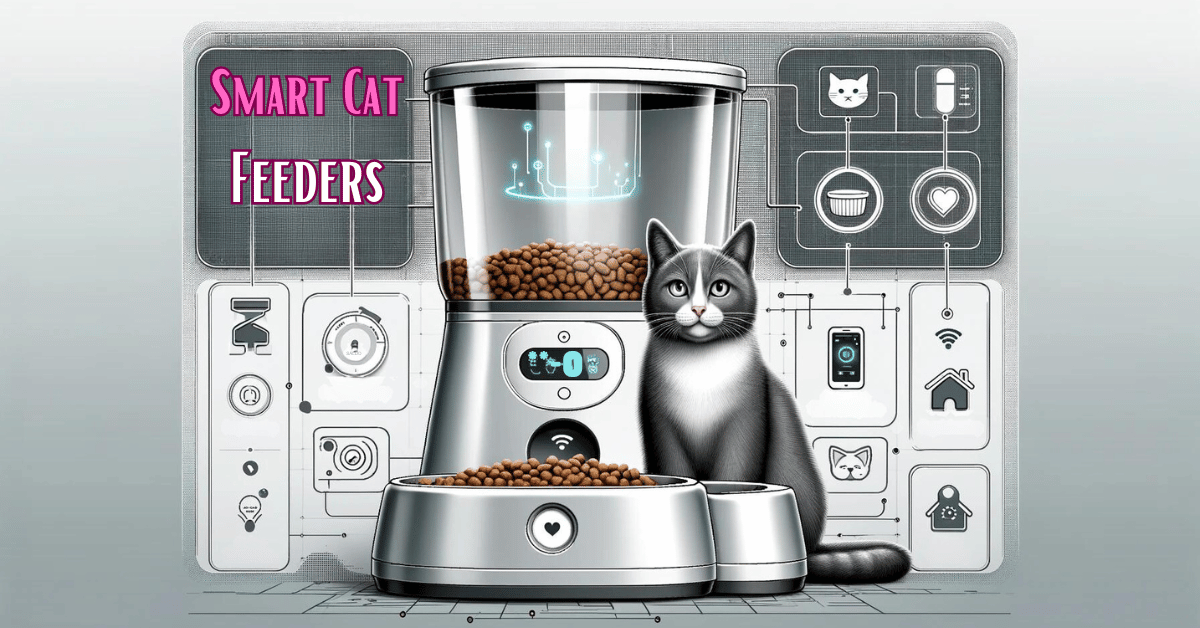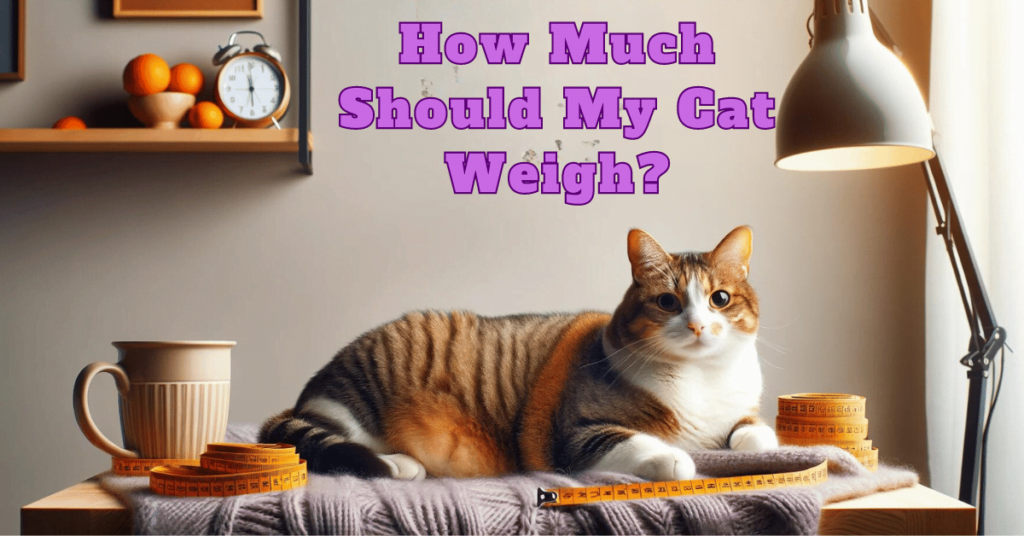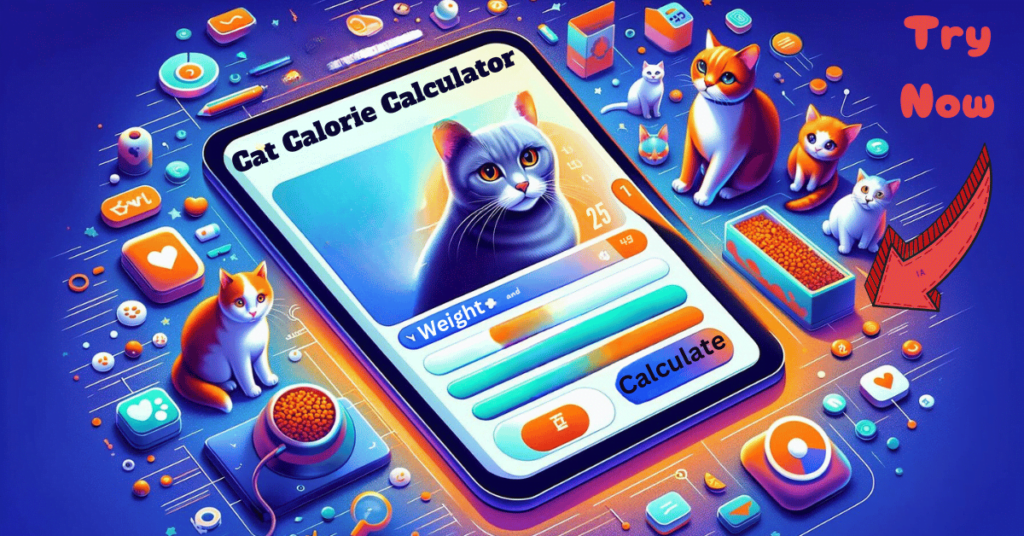This post contains affiliate links and I will be compensated if you make a purchase after clicking on my links.
The Advancements of Smart Cat Feeders
In an era where technology seamlessly integrates into every aspect of our lives, pet care has also taken a futuristic leap. Enter the realm of smart cat feeders—a brilliant fusion of innovation and convenience, revolutionizing how we cater to our feline friends’ dietary needs.
These advanced gadgets offer unparalleled control and simplicity, ensuring your cat’s feeding schedule is as precise and hassle-free as your smart home.
What Makes a Cat Feeder “Smart”?
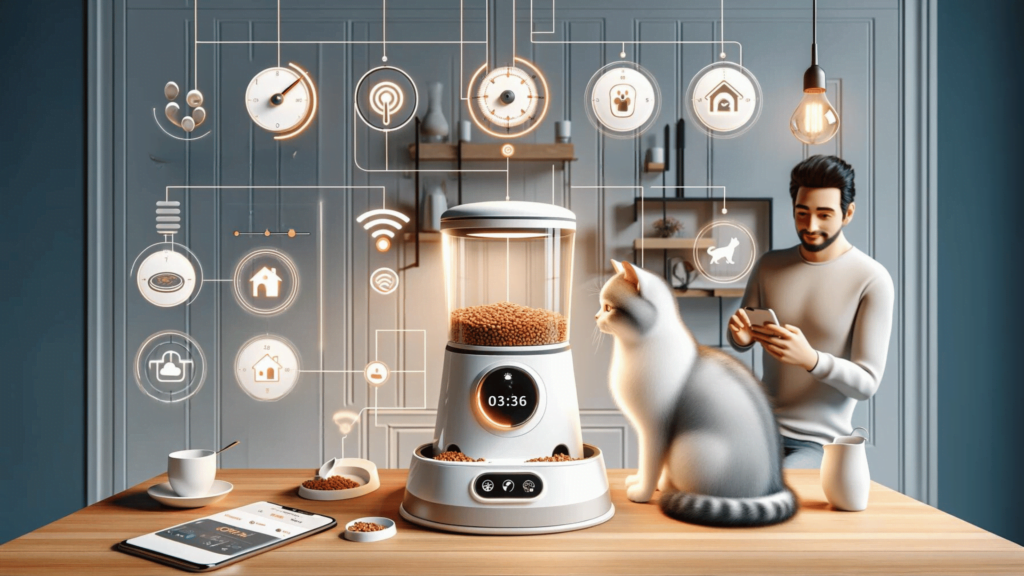
At its heart, a smart cat feeder is more than just a feeding vessel; it’s a high-tech companion in your cat’s nutrition and well-being journey. Defined by its ability to automate feeding through programmable schedules, it offers meticulous portion control, ensuring your pet receives the right amount of food at the perfect time.
The core technology hinges on connectivity—via Wi-Fi or Bluetooth—allowing pet owners to manage feeding times, monitor intake, and even interact with their pets remotely through smartphone apps.
Integration with home automation systems further elevates the experience, enabling voice commands and seamless synchronization with your smart home ecosystem.
Pros and Cons of Smart Cat Feeders at a Glance
| Pros | Cons |
|---|---|
| ✅ Customizable Feeding Schedules | ❌ Dependence on Technology |
| ✅ Portion Control and Dietary Management | ❌ Connectivity Issues |
| ✅ Convenience for Busy Pet Owners | ❌ Cost |
| ✅ Monitoring and Notifications | ❌ Mechanical Failures |
| ❌ Complexity for Pets and Owners | |
| ❌ Security Concerns |
Benefits of Using a Smart Cat Feeder
1. Customizable Feeding Schedules
The cornerstone of smart feeding technology is its adaptability. Customizable feeding schedules align with your lifestyle and your pet’s nutritional needs, making mealtime precise and predictable.
Whether you’re at work or away, you can ensure your cat is fed on time, every time, fostering a routine that supports their health and happiness.
2. Portion Control and Dietary Management
Smart feeders excel in delivering exact portions, crucial for maintaining a healthy weight and managing dietary conditions.
This precision avoids overfeeding and underfeeding, promoting optimal health and mitigating the risks associated with obesity—a common challenge among indoor cats.
3. Convenience for Busy Pet Owners
For the bustling pet parent, smart cat feeders are a game-changer. They remove the worry of manual feeding, providing peace of mind that your cat’s nutritional needs are met, regardless of your schedule. This convenience frees up time, allowing for more quality moments with your pet.
4. Monitoring and Notifications
Insight into your cat’s eating habits offers a deeper understanding of their health. Smart feeders can track consumption patterns, sending notifications for missed meals or low food levels. This feature ensures you’re informed and ready to act.
Potential Drawbacks and Considerations of Smart Cat Feeders
1. Dependence on Technology
Relying too heavily on electronic devices for basic pet care tasks can be a double-edged sword. While technology enhances ease and efficiency, it’s crucial not to let it replace the personal care and attention only a pet owner can provide.
2. Connectivity Issues
The backbone of a smart feeder’s functionality is its Wi-Fi connection. However, reliance on this connection means that any instability or outage could interrupt your cat’s feeding schedule.
Even without Wi-Fi, most small smart feeders stick to their scheduled feeding times. But remember, without a connection, you won’t be able to monitor or change the feeding schedule via the app.
3. Cost
Innovation comes at a price. Smart cat feeders are typically more expensive than their manual or gravity-fed counterparts. This investment may be worthwhile for the features offered, but it’s important to consider whether these align with you and your cat’s needs.
4. Mechanical Failures

Like any gadget, smart feeders are not immune to technical glitches or breakdowns. Mechanical failures can disrupt feeding schedules or cause incorrect portions to be dispensed, potentially impacting your cat’s health and well-being.
5. Complexity for Pets and Owners
The learning curve associated with operating a smart feeder can be steep for some pet owners. Additionally, some cats may take time to adjust to the new feeding mechanism, especially if it makes unfamiliar sounds or movements.
6. Security Concerns
With great connectivity comes great responsibility for data security. Smart feeders connected to home networks pose a risk if not properly secured, potentially exposing personal information to cyber threats.
Top Features to Look For in Smart Cat Feeders
When venturing into the smart pet care universe, knowing which features elevate a smart cat feeder from good to great can be your compass. Here’s what to keep an eye on:
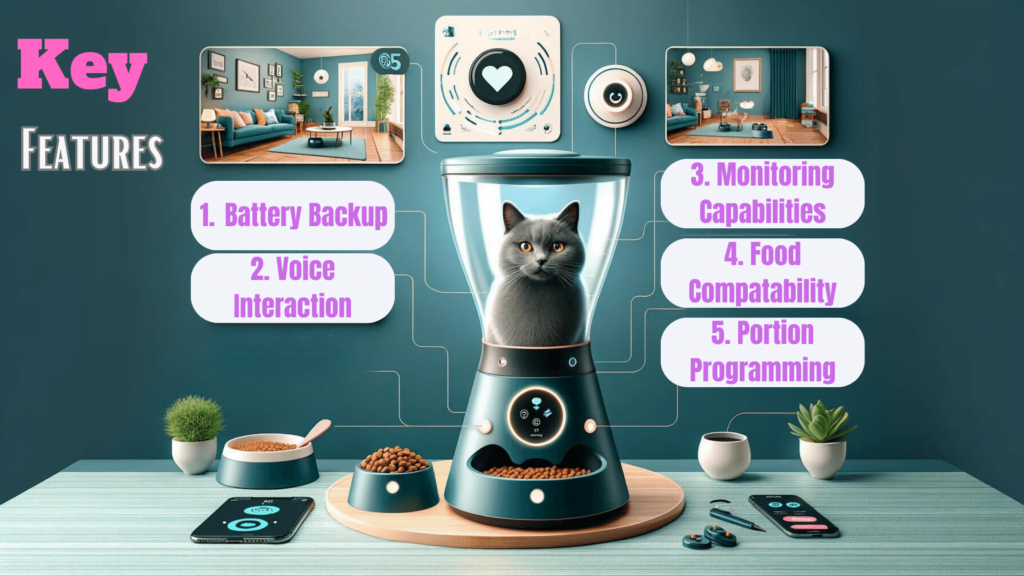
- Battery Backup: A lifeline when the power flickers out or Wi-Fi wobbles. This ensures your cat’s feeding schedule continues uninterrupted, rain or shine.
- Voice Interaction: Adds a personal touch, allowing you to call your cat to meals with a familiar voice, making the transition to tech-feeding smoother and more natural.
- Monitoring Capabilities: Insight into your cat’s feeding habits can be enlightening. Features that track and report mealtime behaviors offer a window into their health and well-being.
- Food Compatibility: From kibble size to diet variety, ensuring the feeder accommodates your cat’s specific nutritional requirements is crucial for a seamless feeding experience.
- Customizable Meal Portions: Ensure the smart feeder you choose allows for programming the exact number of meals and portions per day required.
Bonus Tip: Opt for feeders with intuitive interfaces that make scheduling meals, adjusting portions, and monitoring your cat’s feeding activity straightforward and stress-free.
Choosing the Right Smart Cat Feeder
Picking the right smart cat feeder is a bit like navigating a tech jungle—more complex than other automatic feeders due to the dizzying array of features and tech options.
Let’s declutter this digital maze together.
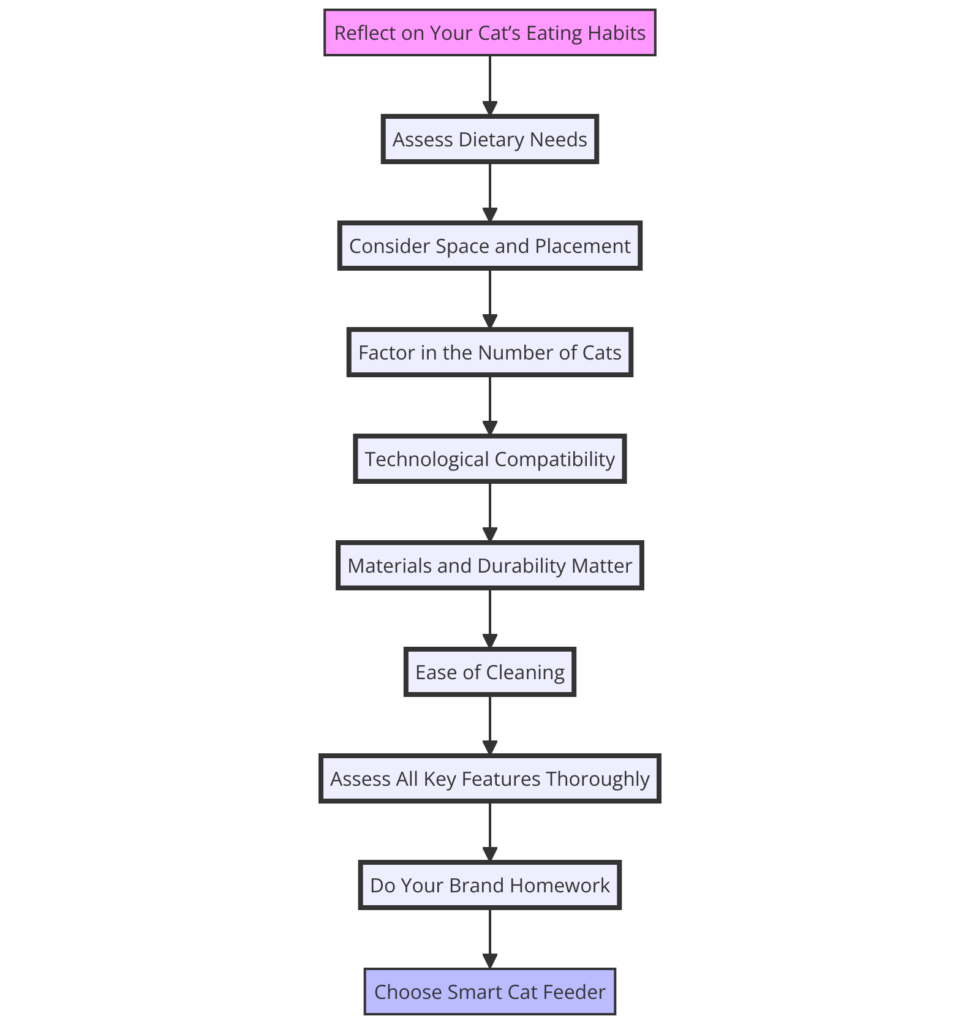
- Reflect on Your Cat’s Eating Habits: Smart feeders shine in managing how much and how often your cat eats. If your cat is a grazer or prone to overeating, the programmable portion control can help maintain a healthy diet and prevent obesity.
- Assess Dietary Needs: Smart feeders aren’t just for dry food; some models accommodate wet food and have features to keep it fresh. If your cat is on a special diet, look for feeders that can dispense the specific type and amount of food needed.
- Consider Space and Placement: While smart feeders are typically designed for indoor use, their placement within your home still matters. Consider the feeder’s size and the Wi-Fi signal strength in its intended location to ensure smooth operation.
- Factor in the Number of Cats: For multi-cat households, some smart feeders use microchip or RFID technology to ensure only the right cat has access to food. This can be especially useful for cats on different diets or with different feeding needs.
- Technological Compatibility: Ensure the feeder’s app or control system is compatible with your smartphone or home automation system. This integration is key for taking full advantage of remote feeding and monitoring features.
- Materials and Durability Matter: Look for smart feeders constructed with high-quality, pet-safe materials.
- Ease of Cleaning: Choose a model that is easy to disassemble and clean, as hygiene is crucial for your cat’s health. Feeders with dishwasher-safe components can save time and ensure a clean eating environment.
- Assess All Key Features Thoroughly: Delve into each feeder’s array of features (discussed previously), from customizable meal portions and food type compatibility to monitoring capabilities and user-friendly interfaces.
- Do Your Brand Homework: Investigate brands and read user reviews to gauge reliability, customer service, and user satisfaction. This research can guide you to a smart feeder that best fits your and your cat’s needs.
Alternatives to Smart Cat Feeders
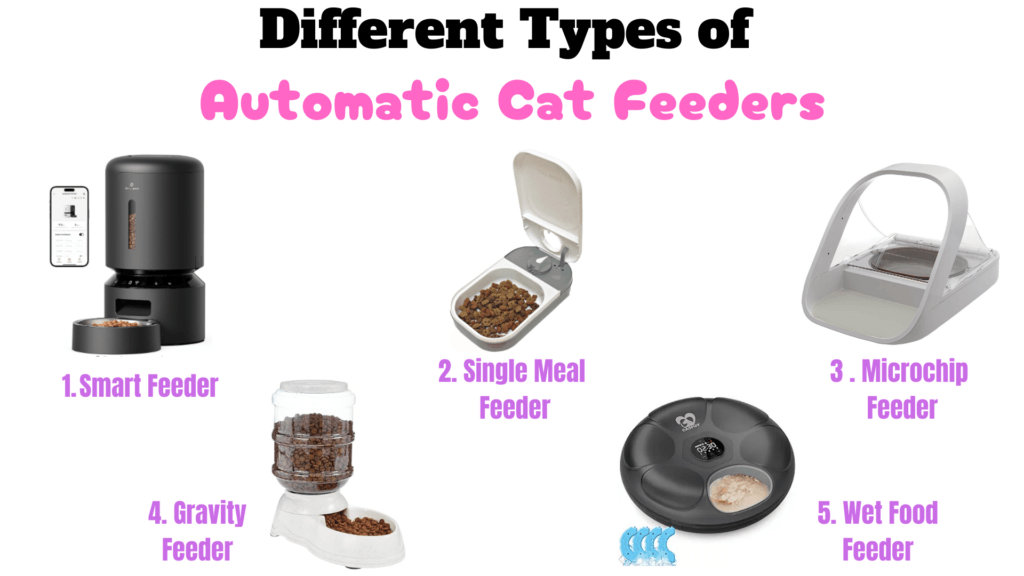
Exploring other types of automatic cat feeders can offer tailored solutions to fit various pet care needs. Here’s a quick guide to some alternatives and who they might best serve.
1. Gravity Cat Feeders
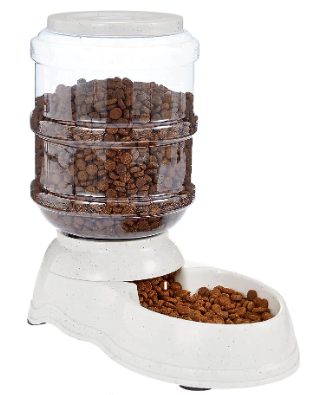
Gravity Cat Feeders are ideal for pets that self-regulate their eating habits, these feeders ensure a constant supply of food, making them perfect for cats with consistent appetites and pet owners seeking simplicity.
2. Single Meal Feeder
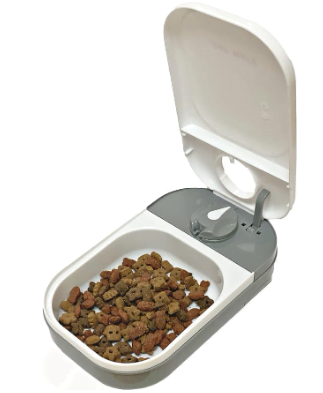
Best suited for pet owners needing to manage specific feeding times, perhaps for a cat on medication that requires precise timing, ensuring they receive their meal (or medication) exactly when needed.
3. Microchip Feeder
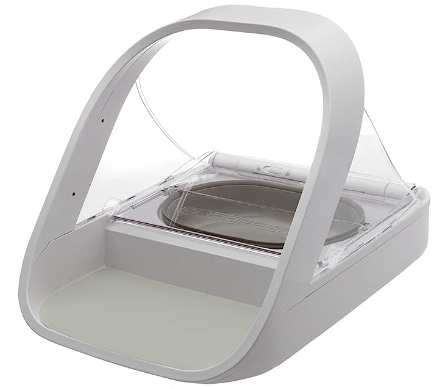
Designed for multi-pet homes where each cat’s diet must be monitored or controlled individually, these feeders grant access to food based on the pet’s microchip or RFID collar tag, making them perfect for households with special dietary needs.
4. Wet Food Feeder
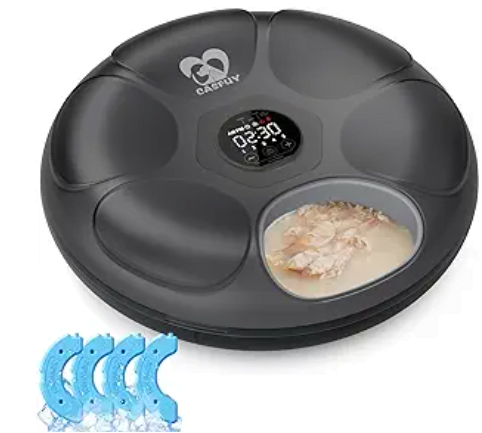
While some smart feeders can handle wet food, these are specifically designed to keep wet food fresh until mealtime. They’re ideal for cats whose dietary needs include wet food for hydration or health reasons, providing freshness with every meal.
In Conclusion: The Future of Feline Feeding
Smart cat feeders are gateways to a new era of pet care, blending the best of technology with the timeless bond between cats and their humans. They promise convenience, precision, and peace of mind, but like any innovation, they come with their set of challenges and considerations.
The journey towards integrating smart feeders into our homes should be guided by a deep understanding of our pets’ needs and a commitment to maintaining the joy and responsibility of pet ownership.
Meet Sean, a fintech whiz with a penchant for pet purrs and blockchain buzz. After a decade of fintech feats, Sean’s tech talents leaped from ledger lines to litter lines, driven by a passion for pets and a vision for a more connected pet care community. With three critter companions as co-pilots, Sean launched this blog to share a treasury of pet-friendly tech tips and tales.

